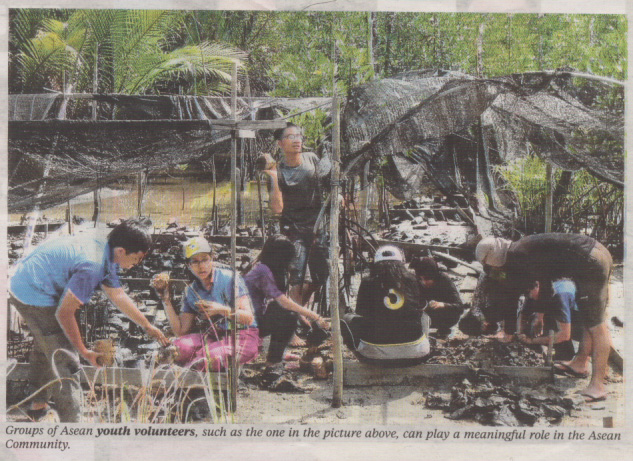En route to Asean Community 2015
Professor Tan Sri Dato' Dzulkifli Abdul Razak
Learning Curve: Perspective
New Sunday Times - 13-10-2013
AS the Asia Pacific Economic Cooperation Summit in Bali, Indonesia opened last week, the Asean Community 2015 International Seminar for Youth Leaders came to a close in Banda Aceh.
At the latter event, Asia-Pacific Economic Cooperation (APEC) policymakers have been called to focus on a broad agenda to ensure macroeconomic and financial stability. Emerging APEC economies have allegedly been affected by the slowdown in global demand, while its most powerful member is facing a government shutdown.
Meanwhile, the Khazanah Megatrends Forum, which was held from Sept 30-Oct 1, drew attention to the "paradox" that economic growth can sometimes be detrimental to development; high but inequitable or unproductive growth does not lead to sustainable economic development.

As the pure pursuit of value creation -- and economic growth through this value creation -- has been distortionary and unsustainable, the theme of the event Growth with Inclusion in An Age of Paradox -- Same Game, New Players was apt.
In essence, the Asean Community 2015 International Seminar for Youth Leaders has expressed concern for the state of education, which is in a quandary much like that of the paradox.
Compared to education, the economic situation in many Asean nations is much more actively monitored.
It generally calls for a more conscious effort to connect education not only to the economy but also to the dimension of politics, security as well socio-culture as envisaged in the upcoming Asean Community.
This concern was reflected in an earlier Asean Youth Forum in Cambodia where leaders from Brunei, Myanmar, Cambodia, Indonesia, Laos, Malaysia, the Philippines, Thailand and Vietnam met in May and issued a common statement calling for a better life and opportunities in their countries and the region.
The document, appropriately titled Our Mind, Our Heart and Our Body, is divided into three parts highlighting the most urgent needs and challenges that Asean youth face today.
Our Mind calls for sustainable and quality education for all. Asean nations share many issues in education such as insufficient qualified teaching staff; inadequate facilities; unequal education opportunities for key populations, and vulnerable and marginalised groups; and lack of programmes that cater for the career goals of youth.
Suggestions to these problems include establishing regional academic standards.
The statement urges governments to increase spending on primary education by up to 20 per cent of the national budget and to establish an Asean Community Volunteer Centre for all levels of education in every country in Southeast Asia.
Equally important is the Our Heart section. Youth see a limited space for freedom of expression and meaningful participation among themselves.
The statement calls for not only the support and investment of the governments but also protection of young individuals, groups and movements, and inclusion of youth in dialogues on important societal topics.
Asean youth has expressed their keenness to encourage peaceful solutions to conflicts through negotiations, and to promote social justice and protection in the area of labour rights violations.
In relation to Our Body, the statement raises fears of living in conditions that threaten health and the environment.
It calls for better health services, drug -- including tobacco -- prevention, protection of sexual and reproductive health rights and access to comprehensive information about sexual and reproductive health to enable Asean youth to make informed and intelligent choices.
In addition, the statement introduces Right of Our Earth, a concept encouraging human beings to preserve the environment and participate in development projects.
Violating the rights of nature is also a human rights violation. In order to ensure sustainable development and protection of the environment, the statement encourages the creation of an environmental fund, which will help in natural disaster response and emphasises projects for youth affected by natural and man-made catastrophes.
Given this background, the seminar participants numbering some 1,500 -- mostly student leaders -- are acutely aware of the time constraints that must be overcome in order for them to play a meaningful role before the Asean Community unfolds.
The question is, will they be part of the Asean problems or part of the solutions? Can Asean live up to its ideals of a people-centric initiative with One Vision, One Identity and One Community? Can it be inclusive and sustainable?
The writer presented the keynote address at the Asean Community 2015 International Seminar For Youth Leaders in Banda Aceh.
